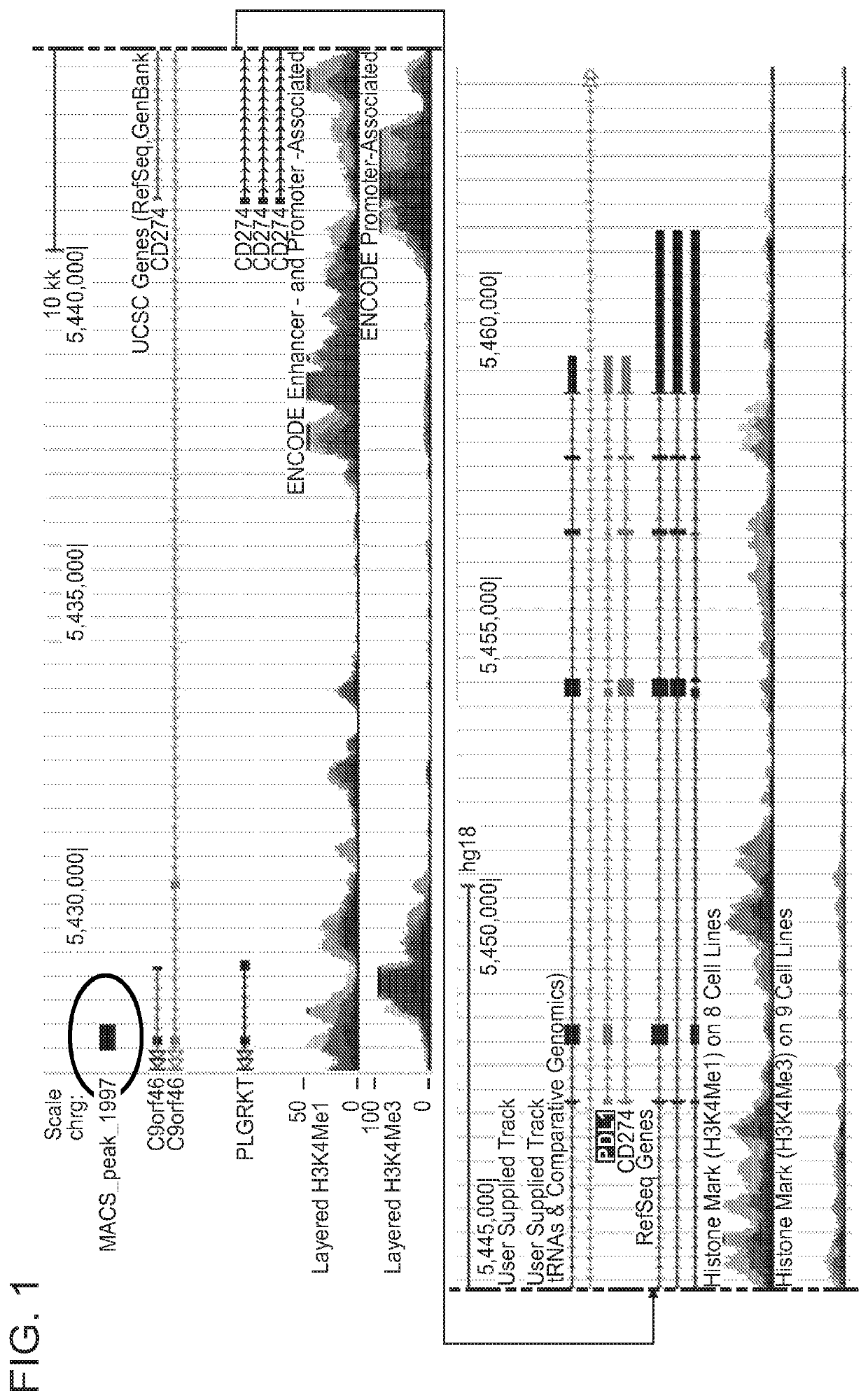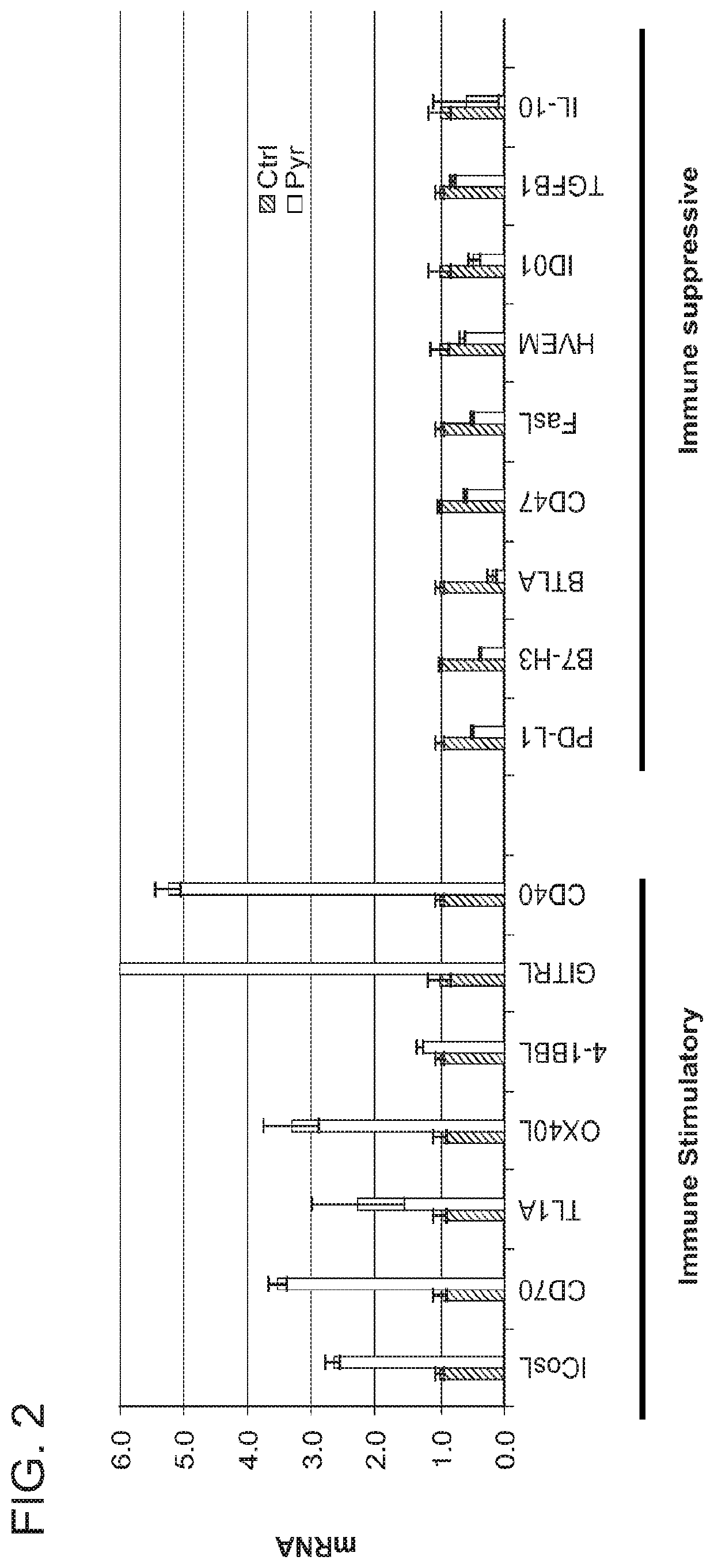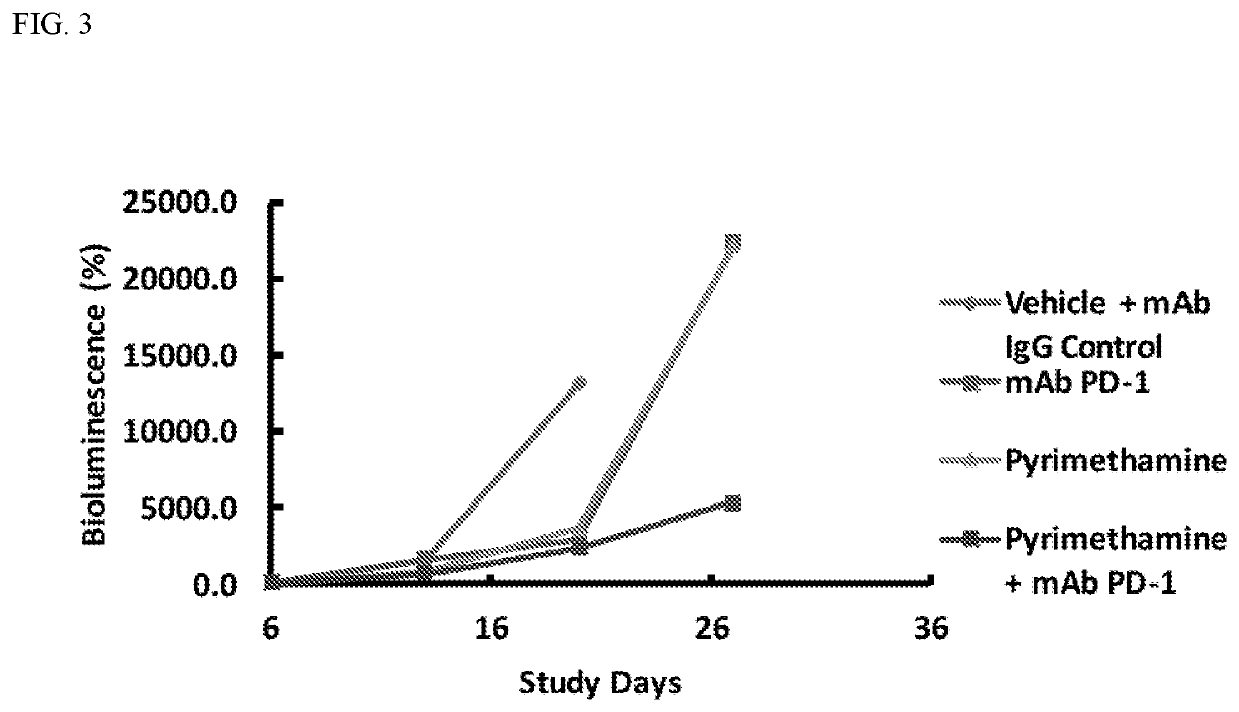Enhanced immunotherapy of cancer using targeted transcriptional modulators
a transcriptional modulator and cancer technology, applied in the field of enhanced immunotherapy of cancer using targeted transcriptional modulators, can solve the problems of incomplete or transient eradication of cancer in patients who respond, not all patients benefit, etc., and achieve the effect of increasing the immunogenicity of tumor cells, and increasing the effectiveness of effector t cells
- Summary
- Abstract
- Description
- Claims
- Application Information
AI Technical Summary
Benefits of technology
Problems solved by technology
Method used
Image
Examples
example 1
tion Factor STAT3 is Constitutively Activated in Many Gliomas
[0184]As described in detail below, the transcription factor, STAT3, is constitutively activated in many gliomas, e.g., glioblastoma, and drives the expression of genes regulating survival, proliferation, and selfrenewal.
[0185]A STAT3 gene expression signature can be defined in a number of ways, as described in Alvarez et al., 2005 Cancer Res, (65) (12) 5054-5062, incorporated herein by reference. One such signature (described in the above paper) is comprised of the following 12 genes: MCL1, JUNB, BCL6, NFIL3, CAPN2, EGR1, VEGF, PTPCAAX1, KLF4, EXT1, NPC1, and PAK2.
[0186]A STAT3 gene expression signature, reflecting functional STAT3 activation, is found in a subset of glioblastomas (FIG. 4).
[0187]And, expression of the STAT3 gene expression signature is associated with worse survival of glioblastoma patients (FIG. 5).
[0188]STAT3 also alters gene expression in gliomas to make these tumors less immunogenic. Finally, describe...
example 2
on of the Molecular Mechanism by which STAT3 Bidirectionally Modulates Expression of Immunoregulatory Genes
[0195]Activated STAT3 can increase expression of genes encoding immunosuppressive proteins while inhibiting expression of immunostimulatory genes. Prior to the invention described herein, a key unanswered question was how STAT3 can mediate these opposite effects in the same cell. As described in detail below, a proteomics approach is utilized to identify mediators of these divergent effects and the mechanism by which STAT3 inhibitors enhance the anti-tumor immune response is determined.
[0196]From combined ChIP-seq and gene expression profiling approaches, 16 immunoregulatory genes were identified as direct STAT3 targets. Seven of these genes are repressed by STAT3 and nine are induced by this transcription factor. Using DNA affinity chromatography, data (using sliver stained gels) has been generated and suggests that the transcriptional complexes at immunomodulatory genes upreg...
example 3
ation of the Key STAT3 Immunomodulatory Target Genes for Enhanced Efficacy with Checkpoint Inhibitors
[0198]Described herein is the optimization of the efficacy of combinations of STAT3 inhibitors and immune checkpoint inhibitors. Using both in vitro and in vivo systems, the genes that represent the key STAT3 targets that underlie the enhanced immune response seen with STAT3 inhibitors are identified. First, the role of the two secreted factors, IL-10 and TGF-β, downregulated by STAT3 inhibition on the immune response to glioma cells is determined. This provides basic insight into the mechanism of immune suppression. These results also provide therapeutic insight, as there are a number of complementary ways to inhibit the effects of these cytokines, including blocking antibodies and decoy receptors. First, the effect of knock down (using shRNA) in glioma cells of IL-10, TGF-β, or both on the ability of splenocytes to proliferate in their presence (by CFSE dilution and flow cytometry)...
PUM
| Property | Measurement | Unit |
|---|---|---|
| dissociation constant | aaaaa | aaaaa |
| temperatures | aaaaa | aaaaa |
| temperatures | aaaaa | aaaaa |
Abstract
Description
Claims
Application Information
 Login to View More
Login to View More - R&D
- Intellectual Property
- Life Sciences
- Materials
- Tech Scout
- Unparalleled Data Quality
- Higher Quality Content
- 60% Fewer Hallucinations
Browse by: Latest US Patents, China's latest patents, Technical Efficacy Thesaurus, Application Domain, Technology Topic, Popular Technical Reports.
© 2025 PatSnap. All rights reserved.Legal|Privacy policy|Modern Slavery Act Transparency Statement|Sitemap|About US| Contact US: help@patsnap.com



